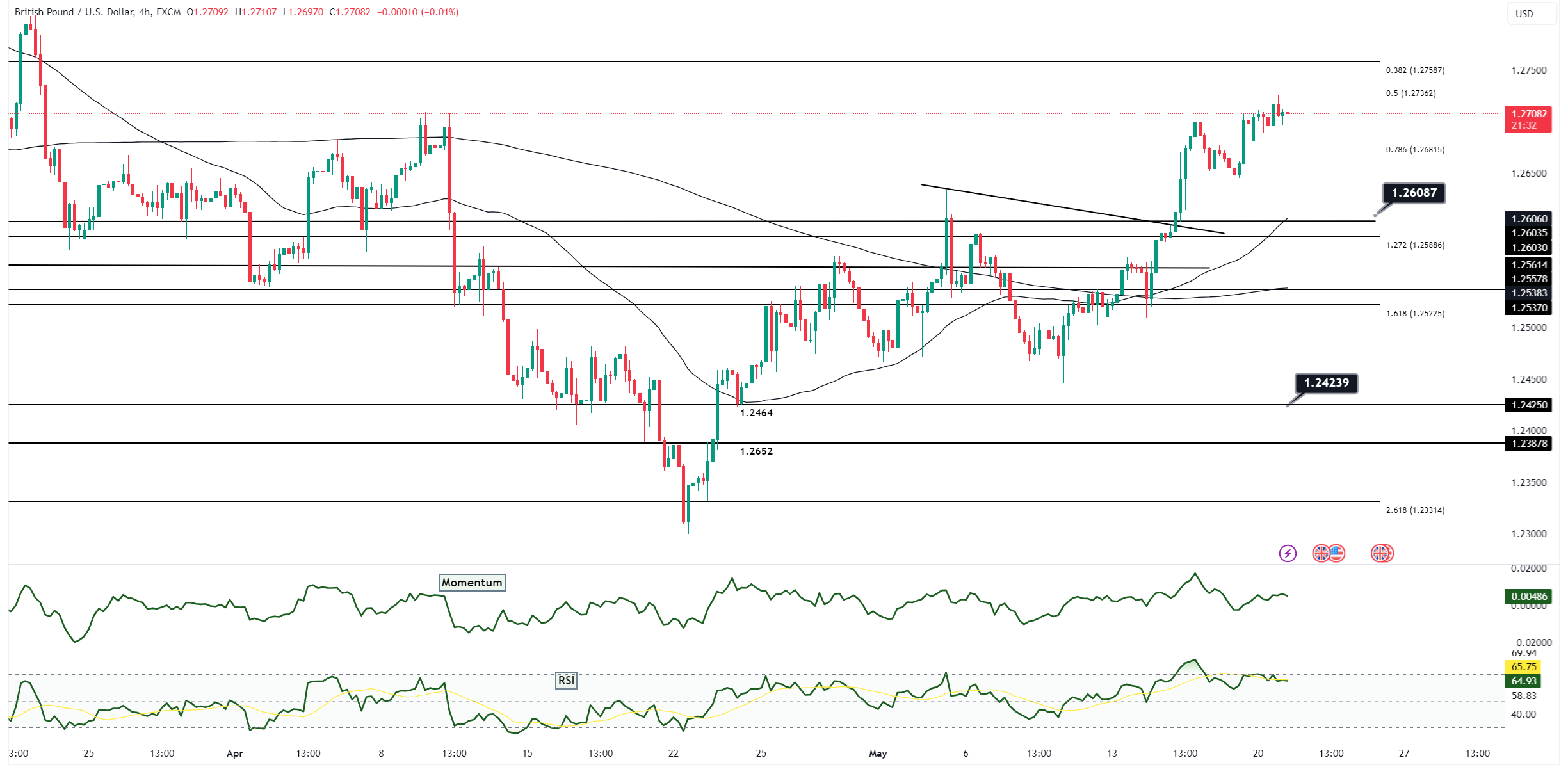GBP/USD Stands Firm as Traders Anticipate UK CPI; Technical Patterns Signal Potential Shift Ahead of BoE Rate Decision

GBP/USD is showing signs of stability as it hovers near recent highs, with traders eyeing the upcoming UK Consumer Price Index (CPI) data set to be released on Wednesday. This anticipated data could be a pivotal factor for the Bank of England’s (BoE) monetary policy direction, especially if the inflation numbers fall below expectations. Such an outcome might advance the timetable for rate cuts, potentially pushing GBP/USD toward the April lows of 1.2299. The currency pair has been on an upward trajectory since Federal Reserve Chair Jerome Powell indicated that rate hikes were off the table, with the next action likely being a cut. This has been supported by data suggesting a slowdown in the U.S. economy and inflation, which could prompt quicker and deeper rate cuts by the Fed. Despite this, the pound's ascent is puzzling given the BoE’s dovish shift at its latest meeting, where two key members voted for a rate cut, and Governor Bailey hinted at a potential cut in June.
On the technical front, GBP/USD has shown resilience, maintaining a pattern of higher highs and higher lows over five consecutive sessions—a bullish signal in technical analysis. Resistance levels are closely watched, with Tuesday’s high of 1.2727, followed by the 38.2% Fibonacci retracement level of the 1.3144-1.2070 move at 1.2734, and the March 18 high at 1.2803. The outcome of the CPI data could either reinforce this upward trend or lead to a reversal if the data suggests a stronger likelihood of upcoming rate cuts. From a macroeconomic perspective, the relationship between diverging monetary policies in the U.S. and UK continues to be a central theme. The Fed’s potential easing contrasts with the BoE's cautious approach, influenced by current inflation trends. Should the upcoming CPI data show a further decline in inflation, confirming the trend towards easing, it might set the stage for a softer pound as market participants adjust their expectations for UK monetary policy.

